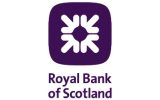Fixed Rate Cash ISAs
Compare latest 2025 Tax Free Saving Deals
Compare Fixed Rate ISA deals!
A Fixed Rate Cash ISA can be a good way of saving money, as ISAs usually offer a higher interest rate than standard savings accounts, and is are subject to tax.
Fixed-rate cash ISAs allow you to lock your tax-efficient cash ISA allowance away for a predetermined period at a fixed rate of interest.
Timescales vary from six months to five years, and generally, the longer you are willing to lock your cash away, the higher the rate will be.
However, it’s important to remember that fixed-rate accounts don’t necessarily beat the highest rates on offer from more accessible cash ISAs.
It’s essential to research providers thoroughly before you commit, rather than assuming that a fixed-term ISA will automatically guarantee a superior rate.
How does a fixed rate cash ISA work?
Traditionally longer fixed terms meant higher interest rates, although this isn’t always the case in today’s financial climate, so you may wish to consider alternatives.
Use our comparison tables below to choose from a wide range of fixed rate cash ISAs from leading providers.
Or for potentially higher returns, you could consider our selection of deposit plan alternatives.
What are the advantages & disadvantages of a fixed rate cash ISA?
Advantages:
- Fixed rate ISAs offer a longer-term way to save money without risking capital on the stock market, so they can be good for the more cautious saver.
- As well as the possibility of a good rate of return over the long term, fixed-rate cash ISAs can be a useful way to save for a specific future event. Knowing that you’ll be penalised for early withdrawal from a fixed-rate ISA might make you think twice before using the cash for something else.
Disadvantages:
- Fixed-rate accounts don’t necessarily beat the highest rates on offer from more accessible cash ISAs. It’s essential to research providers thoroughly before you commit, rather than assuming that a fixed-term ISA will automatically guarantee a superior rate.
- Unlike instant access ISAs, fixed-rate ISAs mean that you run the risk of being unable to switch to a provider with preferable interest, at least until you’ve sat out the fixed term. So, you could find that the attractive fixed rate you started out with begins to look increasingly uncompetitive in comparison with subsequent instant access cash ISA rates.
What to look out for when choosing a fixed rate cash ISA?
- Minimum deposits – some fixed-rate cash ISA accounts require a minimum level of funding to get started. This can vary widely – from as little as £50 to upwards of £1,000 – so it’s important to consider how much money you can realistically afford to tie up for the minimum term required. Once you’ve placed your minimum deposit, you can then add funds up to the ISA limit, which is £20,000 for the 2024/25 tax year.
- Additional bonus rates – many fixed-rate cash ISA accounts offer a bonus for new customers, paid at the end of a set period. There are often conditions attached to this offer, and savers should bear in mind that once this special bonus is paid, the ongoing interest rate may not be competitive. Be prepared to switch to a different ISA provider once this period ends.
- Interest calculation method– some ISA providers pay interest monthly, while others do so quarterly or annually. Check this with your provider before opening a fixed-rate cash ISA.
- Early closure penalties – if you close your fixed-rate cash ISA before the term is over, or withdraw money from it, you will face some form of penalty charge. This may be a loss of interest – for example, on a five-year fixed term cash ISA you could lose up to a year’s tax-free interest if you close your account early.
Deposit Plan Offer
Looking for a Capital Protected alternative to Cash?
Potential 16% after 3 years
- Potential 16% if the FTSE 100 does not fall by more than 20% after 3 years
- Equivalent to 5.33% per year
- 3 year term
- Available as cash ISA, non ISA or ISA transfer
- Capital Protected – receive your initial capital back at the end of the term no matter how the FTSE 100 performs
Our view: The 165% potential return is equivalent to 5.33% growth each year which is significantly more than the current leading longer term savings rates








